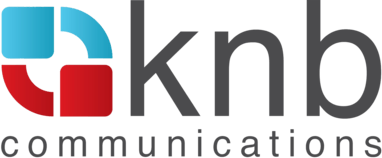The Care and Feeding of the Media
Table of contents
Generally, I’ve always regarded the relationship between public relations folks and the media as symbiotic. On the one hand, journalists need PR practitioners to feed them story opportunities and sources. On the other hand, journalists, particularly those affiliated with the national media, are in essence, the holy grail of the client placement opportunity.

While we both feed each other, there are times when the scales can tip and the relationship between the two camps can become somewhat adversarial. Reporters will say they don’t like “PR people.” PR types will become annoyed when they feel a reporter hasn’t represented a client’s story well.
Over time, I have learned that there are tacit rules that must be adhered to by PR practitioners for the care and feeding of the media. After all, it is the reporter that can wield all the power when a client wants coverage in a particular media outlet or outlets. If these rules are followed, a journalist can truly become your ally in securing the kind of media coverage for your clients that will help establish a sustainable and long-lasting bond between client and agency.
Basically, here’s what I’ve learned:
- Particularly with “non-trade” reporters, get to know what industry they cover and their specific area of focus within that industry. Familiarize yourself with past articles they’ve written, their writing style, how they present a story and source quotes within a story. Reporters have neither the time nor inclination to be the conduit for every story pitch targeted to the media outlet they work for. Those who continue to receive pitches that have little or nothing to do with their particular area of expertise will hit the delete key faster than you can say their name the minute they see your name on an email or their caller ID.
- Keep pitches short and to the point. Similar to writing a press release, lead with the main point of your pitch and back it up with interesting facts, data and examples.
- Don’t pitch a reporter with different takes on the same pitch if they’ve already said no to your original idea. It’s sort of like poking a beehive over and over again. Eventually, you’ll get stung. If you have the opportunity (and savvy) to develop a good working relationship with a reporter over time, they’ll tell you why they weren’t interested in your story and even provide suggestions as to what would make them take a second look.
- If you can’t believe in a pitch or a product enough to sell it, don’t! If you don’t believe in what you are trying to promote, neither will the media.
- Be prepared to give reporters what they’re looking for if you initiate the contact. Reporters want compelling stories that are of interest to their readers/viewers/listeners, the necessary stats/data and examples to support it, articulate and knowledgeable spokespersons, and dynamic graphs, charts and infographics to enhance the story. Don’t initiate a pitch if you are going to assign conditions to it (e.g. “we can give you X information but not Y,” “our spokesperson can only speak about z” etc.) Pre-conditions, unless a reporter initiates the contact, can result in your losing a story and more important, losing credibility with a reporter.
- Make sure to prepare your spokesperson(s) well to enable them to deliver the type of messages that support their public relations objectives and make a story both interesting and educational at the same time. Also, make sure your spokesperson is aware of any potential issues that may arise and train them on how to address these issues. I cannot stress how critical this is to maintaining credibility with a reporter and helping ensure the story you want to appear, appears.
- When I have an opportunity to take a reporter out to lunch or dinner as a relationship-building tactic, I don’t talk business unless the reporter initiates that conversation. Instead, I use the opportunity to get to know the reporter better. This gives them a chance to enjoy the meal and an opportunity for them to get to know you better outside of the “PR person” realm. Keep the conversation neutral, however. Don’t bring up work or client matters that you don’t want to reveal, even in informal conversation, that they could store away and use later in a story that you don’t want to run.
- While this may seem contrary to establishing good media relationships, always understand the boundaries between PR person and reporter. I have witnessed situations, particularly when a good rapport has been established between PR practitioner and journalist, when things are said in casual conversation that the PR person had no intention of revealing to the general public but the reporter used later in a story. This will ruin any trust that had been established on both sides; it’s a situation where neither party wins.
The media is one of the PR practitioner’s most important tools. And, like any tool, treat it with care, understand how to use it to maximize its efficiency, and it will serve you well.
KNBeings are the team members behind KNB Communications. KNB Communications is a top 10 health tech marketing and PR agency specializing in healthcare, biotech, and life sciences.
Search




.svg)
.svg)
-3.png?width=352&name=KNB%20blog%20images%20(3)-3.png)



